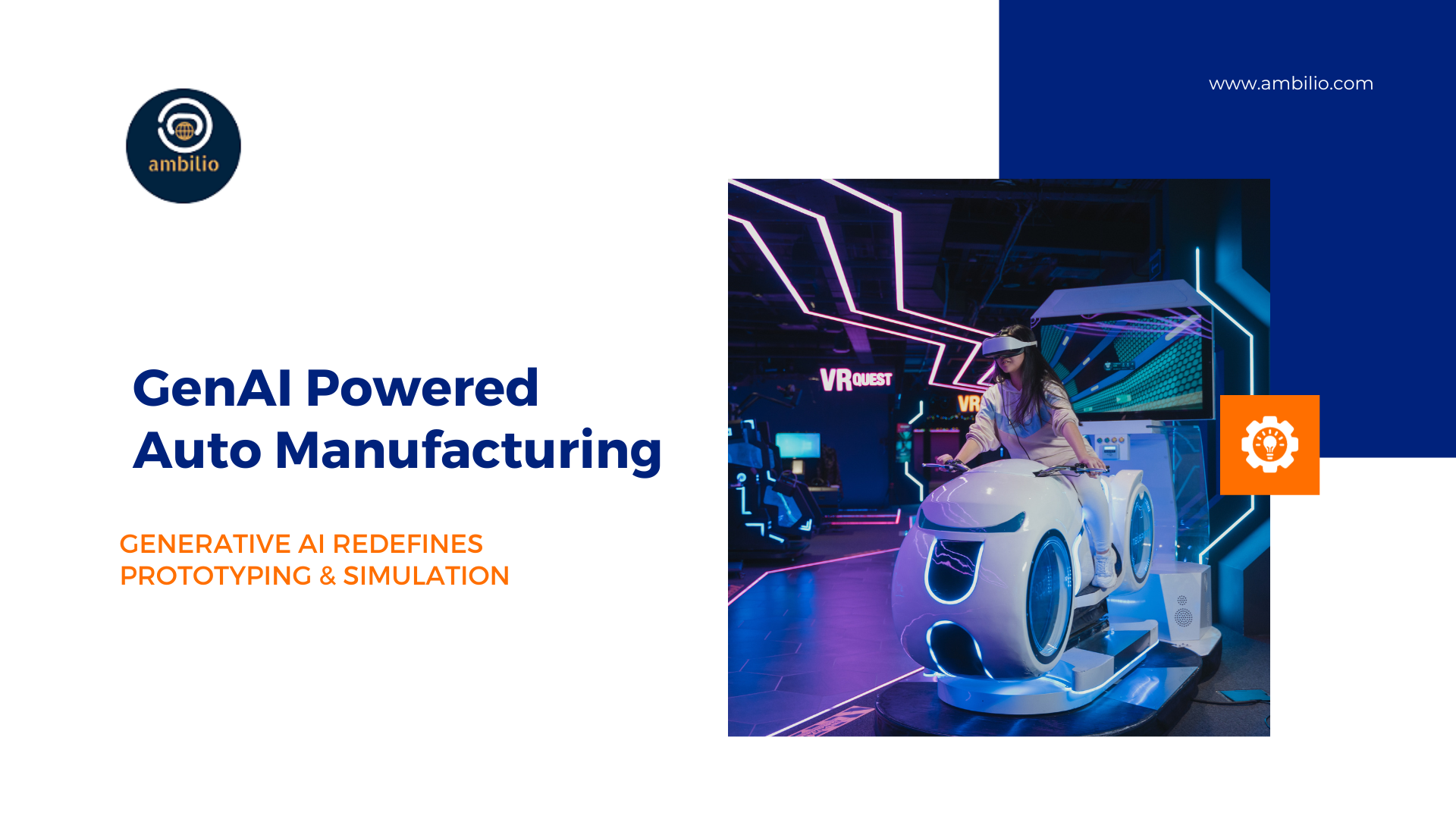In the realm of automotive manufacturing, the fusion of cutting-edge technology and innovation has paved the way for transformative advancements. Among these, Generative Artificial Intelligence (AI) has emerged as a game-changer, particularly in the domain of virtual prototyping and simulation. This integration brings forth a paradigm shift in how vehicles are conceptualized, designed, and tested, significantly altering the traditional manufacturing landscape.
The Evolution of Virtual Prototyping and Simulation
Traditional automotive design and testing methods have long relied on physical prototypes and extensive real-world testing. However, these approaches are not without limitations. They are time-consuming, resource-intensive, and often unable to cover the breadth of potential design iterations or simulate all real-world conditions.
Generative AI-based virtual prototyping revolutionizes this landscape by harnessing the power of machine learning algorithms. It enables the creation of intricate virtual prototypes and simulations that closely mimic real-world scenarios. This shift empowers engineers and designers to explore a myriad of design possibilities and predict the performance, safety, and durability of car components in a digital environment.
Unleashing Creativity and Iterative Design
One of the key advantages of generative AI in virtual prototyping is its ability to fuel creativity and innovation. Engineers can input parameters and constraints into AI-powered tools, which then autonomously generate and explore a vast array of design alternatives. This exploration process leads to the discovery of novel design configurations and optimizes component geometries, unlocking possibilities that might be challenging to conceive manually.
Simulating Real-World Scenarios
The core strength of generative AI lies in its capacity to simulate real-world conditions with a high degree of accuracy. These simulations encompass a spectrum of crucial aspects:
1. Performance Prediction
AI-driven simulations accurately forecast how car components will perform under various conditions such as stress, load, temperature, and more. Engineers can analyze and assess different designs, predicting their behavior before physical production begins.
2. Safety Analysis:
Virtual simulations model crash scenarios and evaluate the impact forces on different parts and materials. This meticulous analysis aids in identifying potential weaknesses in designs, allowing engineers to fortify safety features and enhance vehicle crashworthiness.
3. Durability Testing
Generative AI-based simulations mimic real-world wear and tear, providing insights into the durability and longevity of car components. Engineers can subject digital prototypes to extensive testing, identifying weak points and making necessary improvements without physical degradation.
Benefits and Advantages
The integration of generative AI into virtual prototyping and simulation brings forth a multitude of benefits that reshape automotive manufacturing:
1. Time and Cost Efficiency
By reducing the reliance on physical prototypes, manufacturers can significantly cut down on development time and associated costs. Rapid design iterations within a digital environment streamline the overall production process.
2. Iterative Improvement
Engineers can swiftly iterate through design modifications based on simulation results, fine-tuning components for optimal performance, safety, and durability, leading to higher-quality end products.
3. Risk Mitigation
Early identification of design flaws mitigates the risk of potential errors in physical prototypes or production vehicles, ensuring enhanced overall product quality and safety.
4. Sustainability
Reduced reliance on physical testing minimizes material waste and energy consumption, aligning with sustainable manufacturing practices.
Conclusion
Generative AI-powered virtual prototyping and simulation represent a transformative leap in automotive manufacturing. This innovative approach not only accelerates design and testing but also enhances the overall quality, safety, and efficiency of vehicles. By leveraging the capabilities of AI to simulate real-world scenarios accurately, manufacturers can drive innovation, optimize designs, and usher in a new era of automotive engineering. As this technology continues to evolve, its impact on the automotive industry promises to be profound, shaping the vehicles of tomorrow with unprecedented precision and efficiency.



